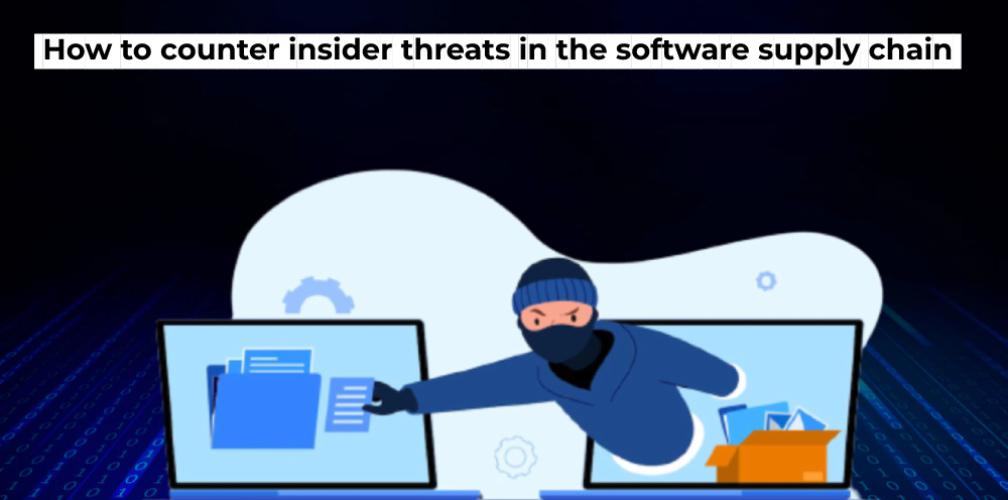In today’s digital world, software supply chain security is a major concern for organizations. In the age of cyber threats, cybercriminals can use a variety of techniques to breach an organization’s security, including exploiting software supply chain vulnerabilities. One of the most dangerous threats is an insider threat, which is an attack that is conducted by someone who has access to an organization’s network or systems. Insider threats can be extremely hard to detect and prevent, and they can cause significant damage to an organization’s reputation and financial stability.

Insider Threat
An insider threat is an attack that is conducted by someone who has access to an organization’s network or systems. These threats can be intentional or unintentional, and they can be conducted by a malicious insider or an employee who is unaware of the risks associated with their actions. Common tactics used by malicious insiders include stealing confidential data, countermining, and manipulating software to gain access to restricted information.
Counter Insider Threats in the Software Supply Chain
To effectively counter insider threats in the software supply chain, organizations must implement a comprehensive security strategy that includes the following steps:
1. Implement Strong Access Controls:
The first step in countering insider threats is to implement strong access controls. Access controls should be set up so that only authorized personnel can access sensitive information and systems. Additionally, access should be revoked when personnel leaves the organization, and admins should regularly audit access rights. This prevents unauthorized personnel from accessing sensitive data or systems, reducing the risk of malicious activity. Access controls should be based on risk assessment and should be regularly monitored and updated as necessary.
2. Monitoring and Auditing:
Monitoring and auditing the software supply chain is also essential for countering insider threats. This should include regular reviews of system activity, data access logs, and other security measures. These reviews should be conducted on a regular basis to ensure the system is secure and any potential threats are identified and addressed.
3. Implement Security Awareness Training:
Organizations should also implement security awareness training for their employees. This training should include information on the types of insider threats, how to identify suspicious behaviors, and how to report any potential threats. This should include training on the organization’s security policies and procedures, as well as awareness of the potential for insider threats. This will help personnel understand the risks associated with the software supply chain and how to identify and report any suspicious activity.
4. Identifying and Assessing Risks:
The first step in countering insider threats is to identify and assess the risks associated with the software supply chain. This can be done by conducting a thorough risk assessment of the system. This should include an analysis of the system’s security architecture, the personnel who have access to the system, and the potential for malicious activity. The assessment should also consider the potential for insider threats to the system and the potential impact of such threats.
5. Developing Security Policies and Procedures:
Once the risks have been identified and assessed, the next step is to develop security policies and procedures to mitigate them. These policies and procedures should be tailored to the specific risks identified in the risk assessment. They should also be regularly reviewed and updated to ensure they remain effective. This includes establishing restrictions on access to sensitive data, implementing strong authentication methods, and regularly monitoring system activity to detect potential threats.
Conclusion
Insider threats in the software supply chain can cause significant damage to organizations. To effectively counter these threats, organizations must implement a comprehensive security strategy that includes strong access controls, user activity monitoring, security awareness training, and automated security tools. By following these steps, organizations can protect their networks and systems from insider threats.




